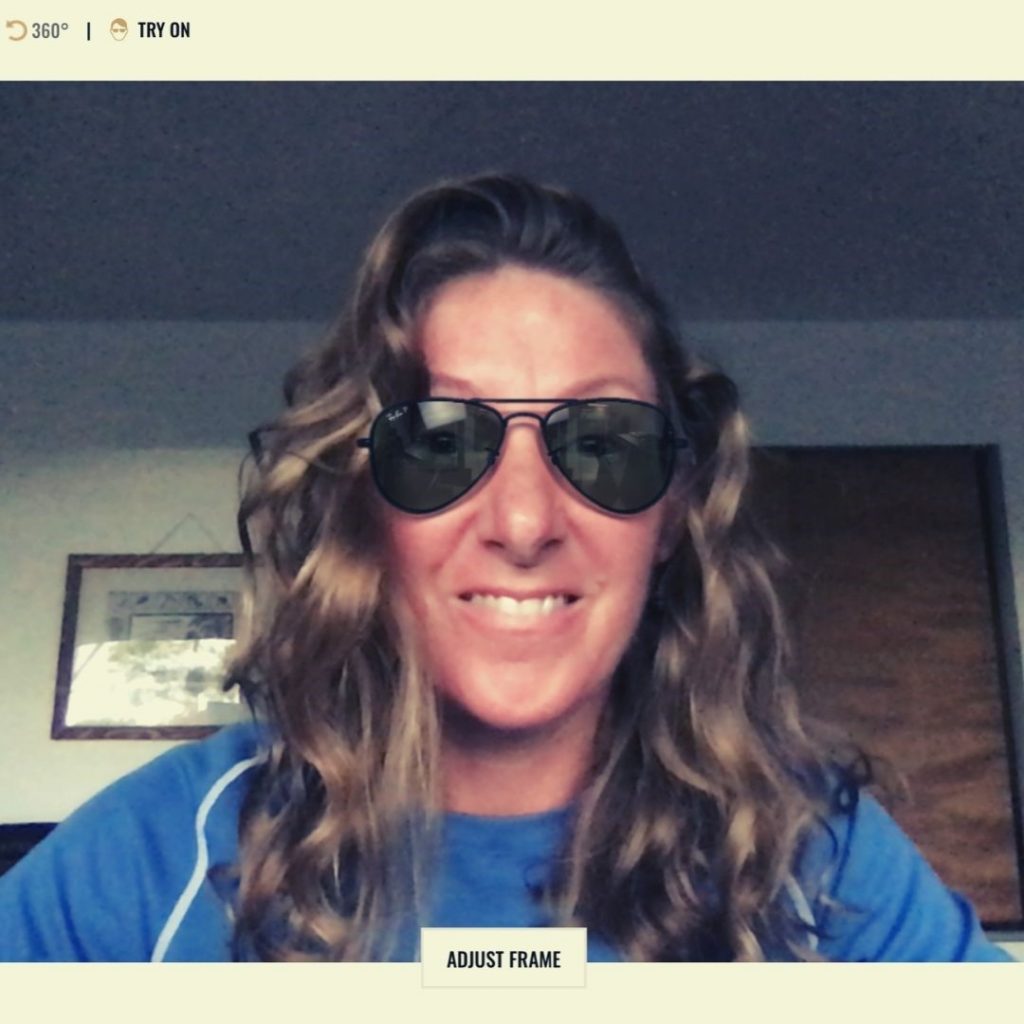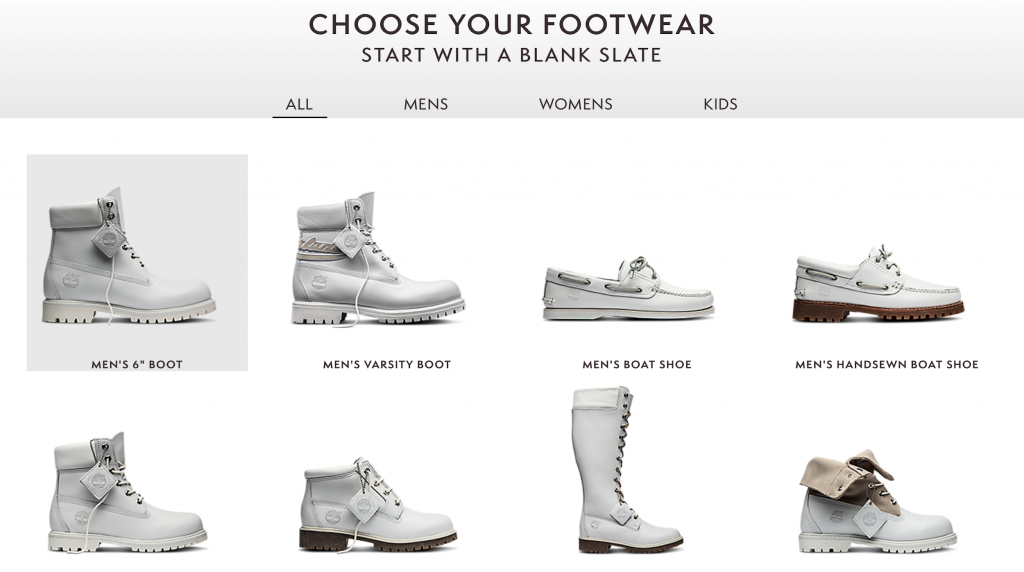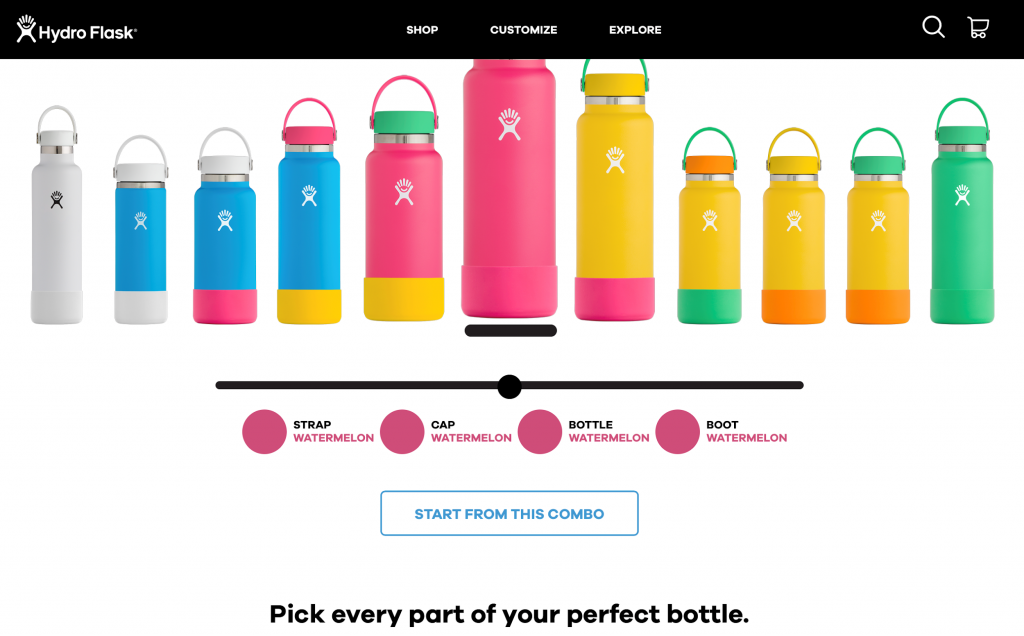
In today’s market, consumers of all ages are looking for unique experiences and products that target their preferences, reflect their personalities, and enable them to share their ideas, beliefs, tastes, and more with the masses.
Users are attracted to companies that encourage them to express themselves through original creations. And brands that offer this creative autonomy by implementing user-generated content (UGC) into their marketing are met with ongoing success.
Clever content created by everyday users has led to the rise of e-commerce product customization – where a brand empowers customers to personalize one or more features before ordering a product online. And thanks to product customization, users have artistic freedom to tailor the products they love to match their aesthetic.
Everyone from millennials to baby boomers is looking for products that highlight their personalities and styles, whether it’s by customizing the creme color of your favorite macaroons or designing a handbag to your unique preferences with custom alteration of colors and patterns.
Full-featured product configuration platforms like ConfigureID engage users with countless product possibilities by enabling them to collaborate with their favorite brands on the creation process. And while there are potential risks to the brand-user collaboration experience, these can be mitigated with the right tools and moderation processes, so brands can reap all the benefits of creative collaborations.
In this blog post, we’ll look at the benefits of product customization, the risks, and the content moderation procedures that savvy brands put in place to avoid possible risks.
Let’s begin by looking at a few of the revenue-driving benefits that product customization can offer your brand:
While a recent study by Gartner revealed that providing a personalized experience to shoppers resulted in a 49% increase in lifetime value of that customer for associated brands, the fact remains that customers tend to switch brands if they are unsatisfied. To pinpoint what they desire, however, requires sending surveys, requesting feedback, conducting R&D, and studying e-commerce trends, which is typically time-consuming and costly.
Product customization takes the pressure off businesses to continually create new products that appeal to their audience by letting customers mix and match their favorite patterns, feature an inspirational quote, include their initials, or whatever moves them.
So give your customers a tailored experience that demonstrates appreciation for their unique personality by offering an array of customization options, access to design tools, and a personalized look and feel with photorealistic 3D-renderings.
Franklin, the industry leader in premier batting gloves, allows customers to design gloves that demonstrate their personal style and team colors. Each glove can be personalized with a name and monogram, and then customized in up to 18 different places.

With so many places to customize, users are likely to spend more time putting their personal touches on an item. And after investing significant time in a product, there is a high potential that they will want to make it worth their while by ordering the item.
The result will be growth in brand loyalty, conversion of creators to paying customers, and improved customer satisfaction.
Sure, customers are excited when a new product from their favorite brand arrives in the mail. When that item is also in the color combination of their choosing and they’ve virtually tried it on before their purchase, it fosters a sense of belonging to an important team.
Sunglass giant Ray-Ban offers the Ray-Ban Virtual Mirror feature, which allows customers to virtually try on their sunglasses using a webcam through augmented reality technology.

Product customization sends a message from the brand to the customer: Look! We’ve collaborated to create something that is one of a kind. And it’s just for you!
By communicating this through personalized products, a bond is established not only between the buyer and the product, but also with the brand that encourages the buyer to explore their artistic ideas.
And with features that offer users the opportunity to “try on” a necklace or pair of glasses, the online shoppers’ confidence in your brand will grow, loyalty will increase, and ultimately, this will contribute to overall brand growth.
A study by Deloitte states that 1 in 5 shoppers will pay 20% more for a product that has been exclusively customized for them. When a customer visits your website to purchase their favorite shoes, you can suggest that they take a product that they already love and make it their own by paying a premium to personalize a pair.
Brands like Timberland know that this upsell is likely to improve a brand’s conversion rate. The outdoor footwear brand allows consumers to create and view an accurate and photorealistic visualization of a customized version of their most popular products through the custom footwear configurator.
Throughout the customization process, the visualization is updated automatically. And during the configuration process, the camera position changes to draw attention to the customized element.

An interactive customization process makes shopping a fun and collaborative experience. If a customer dreams of boots with orange hardware, a camouflage outsole, and purple laces on monogrammed leather, a customization option says: “Click away, your wish is our command!”
When an order for a customized product is placed, it doesn’t just increase sales revenue. It provides valuable insight into a demographic, offering brands the opportunity to collect customer preference and configuration data.
As part of Hydro Flask’s goal of creating a personalized experience for their flask bottle customers and increasing sales, the leader in high-performance insulated products worked with ConfigureID to develop My Hydro. My Hydro allows customers to give their own personal touch to water bottles by selecting from a variety of customization options, including bottle size and color.

The data a company like Hydro Flask can attain from this product customization can be incredibly useful when a marketing team is consideri
ng their next campaign. What’s more, this information on preferences of different demographics, tendencies of individual customers, and overall color and style trends in customization tools provides valuable direction for new product offerings.
This data can then be used to launch marketing campaigns with influencers using or wearing products that reflect the colors and styles most often selected, which has been shown to boost conversion rates.
Product customization is changing the online marketplace by acknowledging personal taste and encouraging collaboration. And brands that embrace this shift are finding success with user-generated product customization. With so many benefits, why would brands need to proceed with caution?
Protecting your brand’s standards is a compelling reason to put some precautions in place. If you give a customer the freedom to create something clever and fresh associated with your brand name, then you may inadvertently encourage the creation of a product that fails to align with your brand values and standards, such as products containing negative wording and/or offensive imagery, which is undoubtedly bad for publicity.
Customization can also cause trouble if users choose to mention a competitor brand during the customization process. For instance, Pepsi would not be pleased with a custom can that says “Coke” on it.
That’s why it’s critical that moderation occurs early on in the customization process. Moderation that happens before an image is rendered is ideal.
Naturally, users want to see the most accurate rendering of their personalized product before ordering it. The ideal user experience enables them to build their original take on a given product, then view a photorealistic 3D-version and turn it to see all angles.
But what’s stopping a user from taking a screenshot of this realistic rendering and sharing it? This risk is why some brands are not only concerned about the final tangible product that they are shipping, but the realistic rendering that the user reviews before placing an order.
Rather than skip offering the photorealistic 3D-version to users, implement moderation of product customization even before designs are rendered, and enjoy the benefits of this creative partnership while avoiding the risks.
Some of the most effective options for checking user-customized content before it is rendered are as follows:
This is the safest approach to implement before the rendering. A larger team will cost more than a small team for obvious reasons, but it’s crucial that the moderation team be large enough to review submissions as quickly as possible to meet customer expectations.
To check for major offenses in real-time before the product rendering shows, consider utilizing AI. Pattern-matching technology can compare submissions against any competing brand logos, as well as other patterns or images that your brand does not permit.
While AI is not as adept at determining context as human moderators, and therefore not as accurate, it is close to real-time and will serve as a powerful first line of defense. If an image is determined to be high risk by AI, then your brand can immediately communicate to the user that they must provide a new submission. The good news is that doing so will keep them engaged in the customization process.
In the case of text, AI-powered moderation during real-time configuration is highly recommended. Checking text requires a robust profanity filtering service that equips brands with the ability to create their own custom blocklists populated with names of competing brands or additional text risks unique to each company.
Does your brand allow users to customize with more than three characters for initials? Be aware that the more characters allowed, the more of a risk the feature becomes. As such, the use of more advanced text moderation to identify racism, criminal activity, and other personal attacks is highly recommended. When it comes to text, profanity filtering transpires in close to real-time, so moderation will not result in notable delays in rendering the final product.
Moderation that combines AI and live teams can prevent brand-damaging renderings while actually boosting conversion rates. Here’s how:
With all moderation, there is a slight lag between adding an image or text and showing the user a rendering of what the customized product will look like. This pause needs to brief since users expect to see their new, customized product instantly.
To seamlessly take consumers from using the customizer to actually buying the personalized product, keep your users engaged by making moderation as fast as possible through a hybrid approach. Using AI as your front line of defense and human moderators for more nuanced content will offer efficient moderation that promotes engagement.
AI can check the custom product for brand-damaging content in near real-time, and you can always have a live moderation team analyze the product for brand-damaging images or text before it’s produced to catch anything that was too nuanced for the AI to detect.
All brands want their users to have a positive experience and users consistently demonstrate their love for product customizers. It’s a win-win… unless it backfires.
From rendering to actual shipping, product customizers that implement little to no moderation in an effort to please customers (while cutting costs) may lead to renderings and final products that are offensive, brand-damaging, and detrimental to your bottom line.
The cost of checking the images and text of customized products can be a concern, but fortunately, AI is a cost-effective option to utilize during real-time rendering. Investing in moderation of orders by live teams can pay off when users who are just experimenting eventually convert to buyers of a product that your brand can be proud of.
If your brand is offering users varying color choices, patterns, or pre-selected text, then moderation won’t be necessary, as you are controlling all options. As soon as you open up the experience to allow embroidered initials, customized text, or personalized images provided by the user, deliberate moderation goes from being optional to necessary.
By telling your customers “Let’s partner to create something awesome together that is only for you!” you form a long-lasting bond that few marketing tools can match. Although this partnership comes with risk, it is well worth it as long as you take the necessary steps to protect your brand. While the product may be customized, it is still your logo on every item you ship to your “forever” customer.
Joshua Buxbaum is the Co-Founder and Sales Director at WebPurify, a privately held company specializing in profanity filtering, and image and video moderation services.